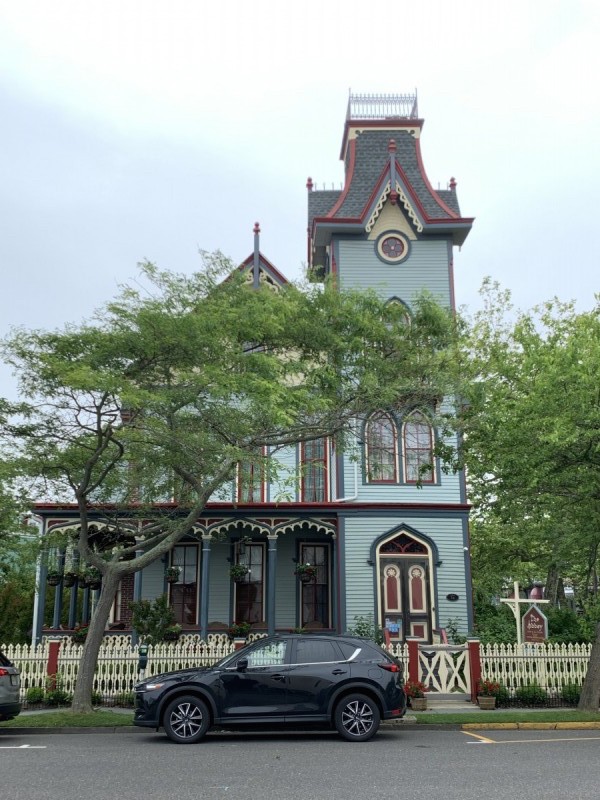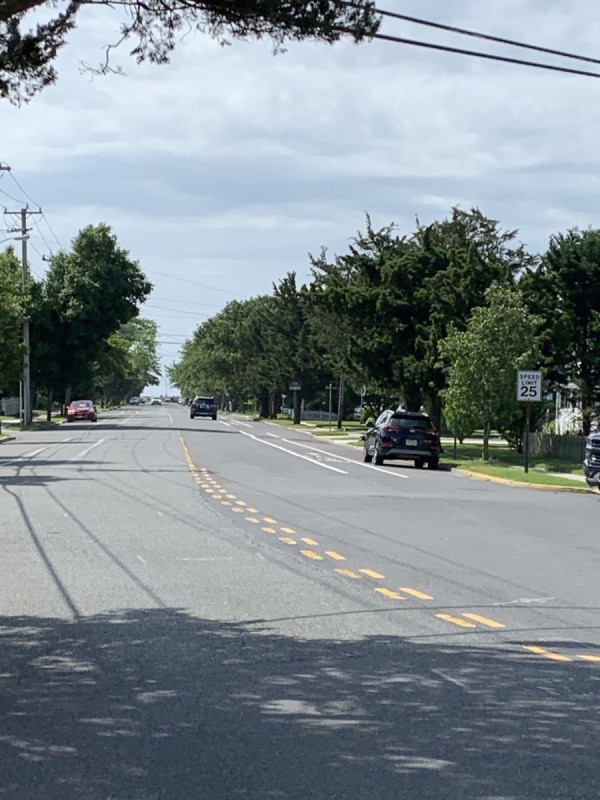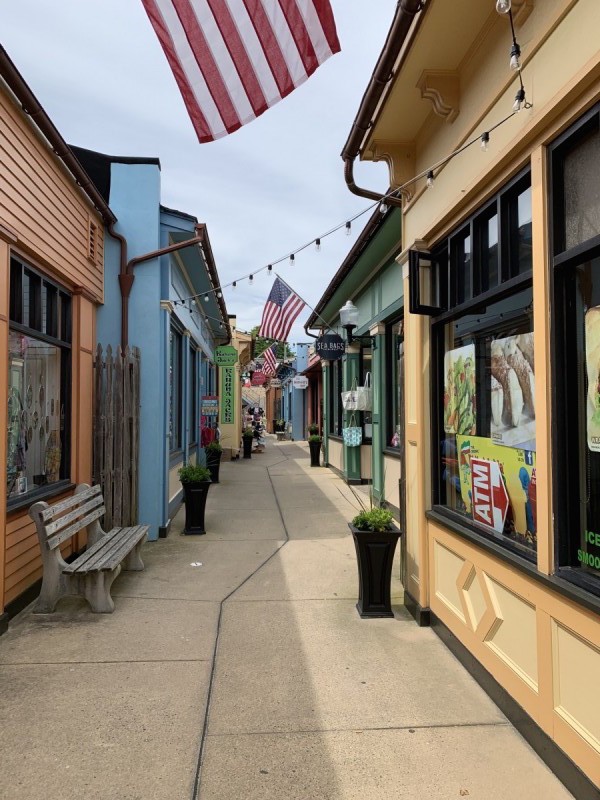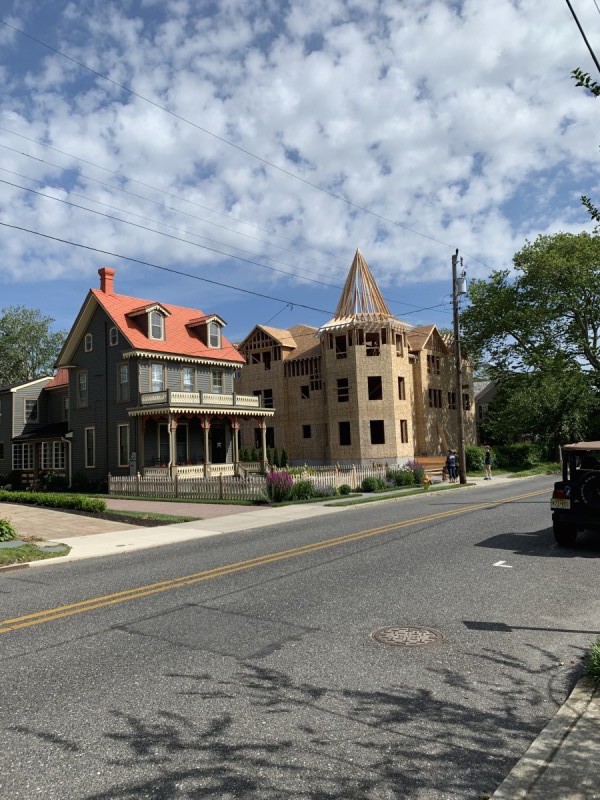Beach town urbanism: There’s big density in small spaces in Cape May

Beachhouse bed and breakfasts in Cape May. Image by Frank Di Bona licensed under Creative Commons.
Last year my family and I decided to visit Cape May, New Jersey for the first time after a lifetime of mostly sticking to beaches closer to DC. We liked it so much we went back again this year. One reason we returned is because the area is laid out a bit differently than most beach towns. Cape May offers a great example of a walkable and historic place that’s able to handle a lot of people.
Even though we drove from Virginia to get to Cape May, one of the reasons we like the town so much is because of how walkable it is. It’s comfortable to get around on foot not just along the Boardwalk, but throughout the whole town, which has a well-preserved historic core. It’s been a retreat for beachgoers since the late 18th Century, making it one of the country’s oldest beach towns. That heritage helps it stand out from bigger towns along the Jersey Shore and beach cities like Ocean City, Maryland or Virginia Beach.
At the same time, it’s not exactly a small town akin to the Delaware beach towns across the bay. Its balance owes a lot to how the town is laid out to prioritize people walking and to how it kept historic elements, but updated their uses for modern needs.
This well-preseved house in Cape May is now a bed and breakfast. Image by the author.
In addition to the beachfront boardwalk, there’s a pedestrian mall located along Washington Street a few blocks away that’s almost as big a draw as the beach. Surrounding the mall is a huge collection of Victorian gingerbread architecture. Tours focusing on the town’s architectural heritage are popular.
Part of the pedestrian-only section of Washington Street. Image by the author.
What’s more impressive is the town’s ability to handle crowds without the usual hallmarks of a busy beach town, like large parking lots or huge hotel complexes. Only a few buildings rise above seven stories, and most people stay in bed and breakfasts or beach condos. But since the buildings are all on small lots and are usually subdivided with a few units per building, the town manages have a density of about 21,000 people per square mile, similar to Capitol Hill in DC.
Another thing that makes Cape May pleasant? It has uniformly narrow streets, none of which are wider than two lanes, even on the main thoroughfares including the main approach off the Garden State Parkway.
Madison Avenue in Cape May. One of the town's widest streets is still pretty narrow compared to a lot of roads around our region. Image by the author.
All those narrow streets and close-together houses make the town walkable. This holds even outside of the most historic parts around Washington Street in neighborhoods with homes built at later dates.
Even new buildings are built in traditional styles, and many are subdivided into small apartments which provide more housing options. Bigger hotels exist but are dispersed throughout town. It’s not unusual to see a hotel next to a single-family home next to a building with three or four units. Here “neighborhood character” comes from good design choices, rather than limiting housing to a particular type.
One of the bigger hotels in Cape May is nestled among single-family homes. Image by the author.
The town is bike-friendly as well, though you wouldn’t know it by simply looking for bicycle infrastructure. Even though there aren’t very many bike lanes in town, it’s impossible not to notice that biking is a popular way to get around. The narrow streets help people feel comfortable riding a bicycle, and drivers know to look out for them.
A typical street in Cape May. Image by the author.
Another reason for bike-friendliness is the town’s parking policy. Parking along Beach Drive or near the Washington Street Mall requires payment. It’s only $2 an hour, but competition can be fierce. This cuts down on the incentive to move the car around, and people are willing to walk or bike more. Some people take the various Jitney shuttles that run in loops and make up the bulk of the area’s transit service.
Parking lots exist, but none are very big. The biggest parking lot at the local elementary school, open to the public during the summer, only has about 75 spots total. The town makes do with a combination of patience and being willing to walk a little to get down to the water.
Not everything is perfect. The town’s narrow streets can also sometimes means narrow sidewalks, which can be a challenge for some people with mobility challenges. Some parking decisions interrupt the sidewalk and put cars and people walking in conflict.
This narrow alley off of the Washington Street Mall has a number of stores. Image by the author.
Transit outside of Cape May to other areas consists of a limited bus schedule with routes that mainly cover towns between Cape May and Atlantic City. Since architecture in the area is well-preserved, that can mean challenges similar to ones in our region over balancing modern needs against historic resources.
Some new construction is still being built in traditional styles throughout town. Image by the author.
None of this is particularly groundbreaking. The area’s success is the result of good choices made over the years, like keeping narrow streets as they are rather than giving in to pressure to widen them over fears of congestion, and managing existing parking rather than adding a new parking lot or garage.
Here in the Washington region we can’t exactly install oceanfront boardwalks, but we can take a lesson from Cape May and keep our streets walkable and allow housing to grow, even on smaller lots.
